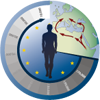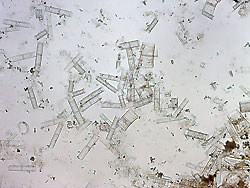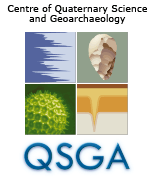While planned field work in Wadi Shati in Libya was impossible for obvious reasons, progress has been made on laboratory analyses of the 16 m long core (Co1240) from Lake Yoa/Ounianga Kebir (NE Chad).
Non-destructive measurements (XRF element analyses, physical properties) are completed and processed and ready for interpretation. Smear-slide compounds prepared during sub-sampling provides insights into sediment composition. According to AMS radiocarbon dates, the new record reaches down to 10,900 calBP. A recalibrated age-model supported by first varve counts validates the previously established reservoir effect. Variations in sediment properties (magnetic susceptibility, sedimentary structures, sedimentation rates) indicate that the early-Holocene depositional history of Lake Yoa began with a swamp-like environment fading into an initial lake-phase with extremely fine lamination of evaporates and clastics. There follow high-organic freshwater sediments marked repeatedly by extreme rain flood events and homogeneous convolute layers, possibly triggered by earthquakes. They extend to the already known consistent varve sequence which stretches from the mid-Holocene to the present-day lake bottom.
Carbonate limnites exposed high above the present levels of the lakes of Ounianga Serir, some 50 km east of Lake Yoa, are being studied for comparison and correlation. Our ultimate goal is a detailed reconstruction of regional and supra-regional environmental and climatic variations in the Sahara for the entire Holocene.
During the past year, preliminary results have been presented at international conferences and workshops including MPI for Meteorology (Hamburg), AGU Chapman (Santa Fe, New Mexico), INQUA (Bern) and two PAGES Varve Working Group workshops (Texas A&M and Bremen universities) which provided opportunities for expert discussions underlining the unique nature of the Lake Yoa data set for the African continent.





















